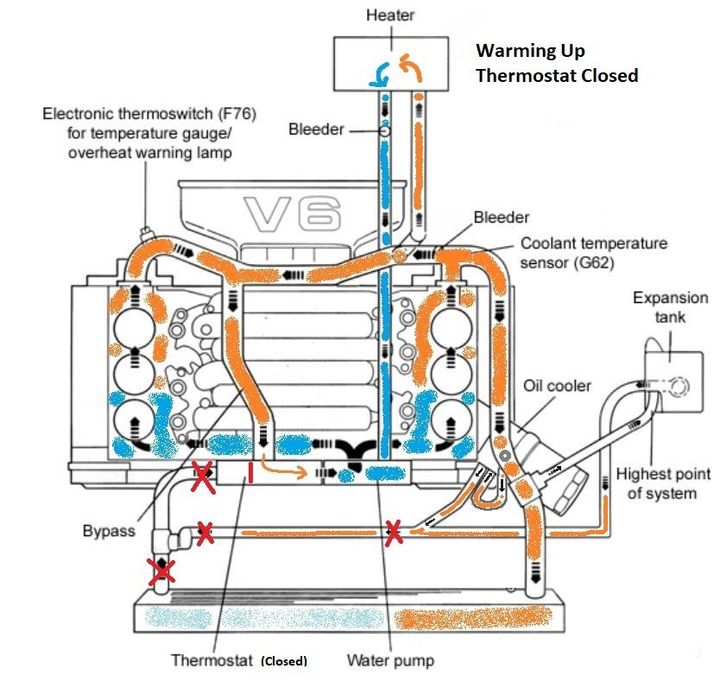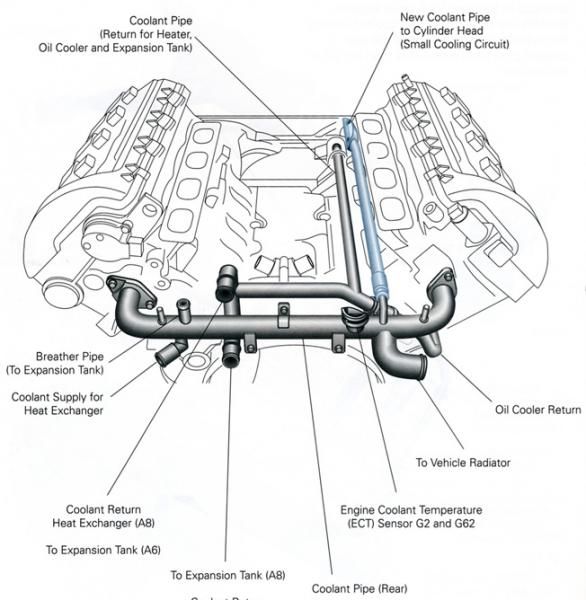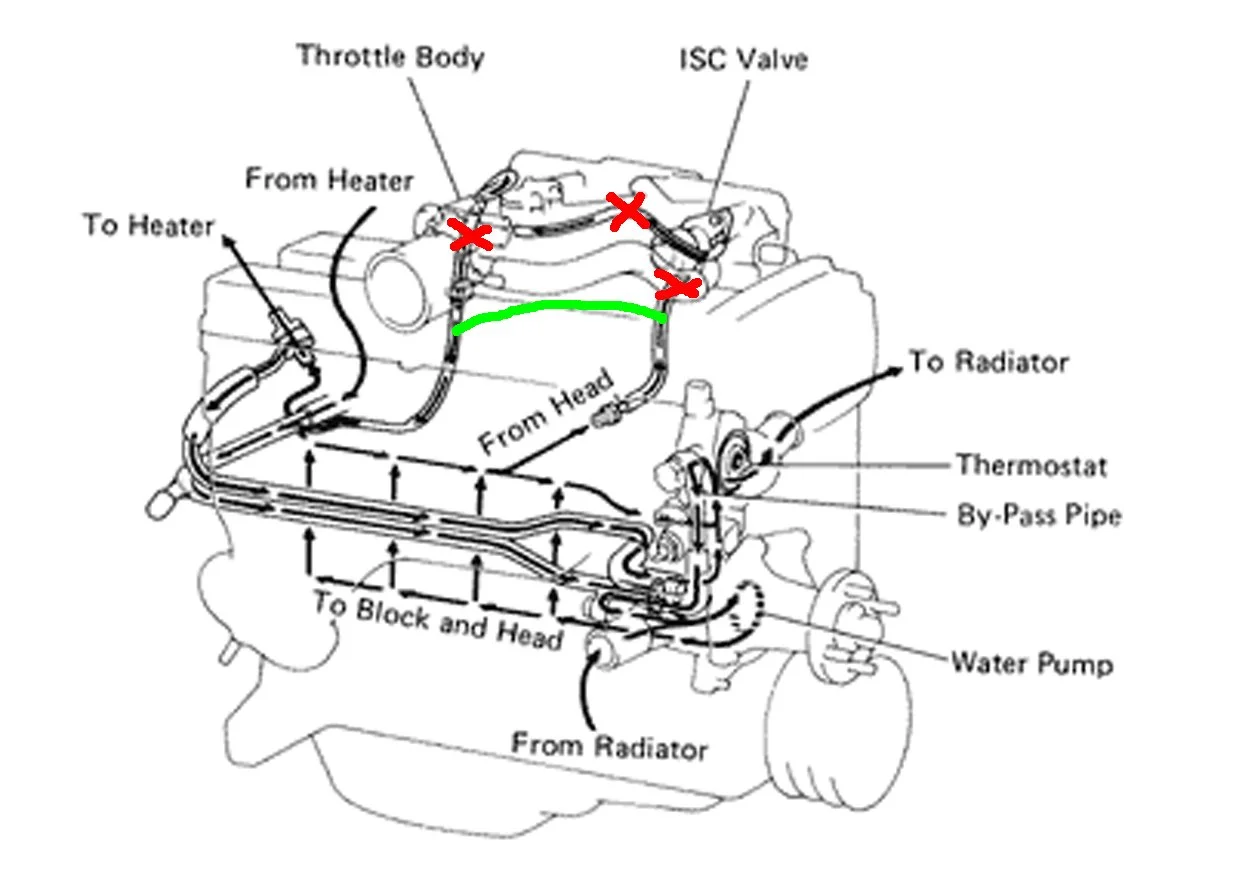


Coolant in the exhaust but not in the oil is a common issue that can indicate various problems in a vehicle's engine. Coolant is a liquid mixture designed to circulate through the engine's cooling system, absorbing heat and preventing the engine from overheating. When coolant is found in the exhaust, it suggests a breach in the system, allowing the coolant to enter the combustion chambers and exit through the exhaust. However, the absence of coolant in the oil can provide valuable clues about the nature and location of the problem.

When coolant is present in the exhaust but not in the oil, it typically indicates a leak that allows the coolant to enter the combustion chambers directly. This can lead to white smoke emanating from the exhaust pipe and a gradual loss of coolant from the system. However, the absence of coolant in the oil suggests that the issue may not be as severe as a complete head gasket failure or a cracked engine block.
| Cause | Description |
|---|---|
| Leaking Head Gasket | The head gasket seals the cylinder head and engine block, preventing coolant from leaking into the combustion chambers. A leaking head gasket is the most common culprit behind coolant in the exhaust but not in the oil. |
| Cracked Cylinder Head or Engine Block | Cracks in the cylinder head or engine block can also cause coolant to leak directly into the combustion chambers, mimicking the symptoms of a blown head gasket. |
| Faulty Turbocharger Seals | In turbocharged engines, if the turbocharger seals fail, coolant can leak into the exhaust side of the turbo and be expelled as white smoke. However, this typically does not cause significant coolant loss. |
To accurately diagnose the root cause of coolant in the exhaust but not in the oil, a systematic approach is necessary. Here are the steps I typically follow:
Check for Coolant in the Oil
Perform a Combustion Leak Test
Borescope the Cylinders
Check for Bubbles in the Coolant Reservoir
| Diagnostic Step | Description |
|---|---|
| Check for Coolant in the Oil | Inspect the engine oil for any signs of coolant contamination. If coolant is mixing with the oil, it indicates a more severe issue. |
| Perform a Combustion Leak Test | Pressurize the cooling system and check for coolant leaks into the cylinders or exhaust manifold, confirming a head gasket failure or cracked component. |
| Borescope the Cylinders | Visually inspect the inside of the cylinders using a borescope. A particularly clean cylinder may indicate a localized issue. |
| Check for Bubbles in the Coolant Reservoir | Bubbles or a sweet smell from the oil fill cap can provide additional clues, but may not pinpoint the exact cause. |
Once the root cause has been identified, the appropriate repair procedure can be undertaken. Here are the common repair options:
| Repair Procedure | Description |
|---|---|
| Head Gasket Replacement | Involves removing the cylinder head, replacing the gasket, and potentially resurfacing or replacing the head if it is warped or damaged. |
| Cylinder Head or Engine Block Replacement | For cracked components, replacement is often necessary, which is more expensive than a gasket job. |
| Turbocharger Replacement | If the turbo seals are leaking coolant into the exhaust, a new turbocharger may be required, along with verifying the coolant lines. |
Maintain proper coolant levels and ensure the correct coolant mix
Replace the coolant at recommended intervals
Avoid running the engine too hot or putting excessive strain on it
Have any overheating issues diagnosed and repaired promptly

The cost of addressing coolant in the exhaust but not in the oil can vary significantly depending on the root cause and the specific vehicle.
| Repair | Cost Range |
|---|---|
| Head Gasket Replacement | $1,000 - $2,000 |
| Cylinder Head Replacement | $2,000 - $4,000+ |
| Engine Block Replacement | $3,000 - $8,000+ |
| Turbocharger Replacement | $1,000 - $2,500 |
Proper diagnosis is crucial to avoid unnecessary repairs and escalating costs. Catching issues early can prevent further damage and potentially save thousands of dollars in repair expenses.
Coolant in the exhaust but not in the oil is a common issue that automotive mechanics encounter. While it may seem perplexing at first, a systematic approach to diagnosis and repair can resolve the problem effectively. By understanding the potential causes, following the diagnostic steps, and undertaking the appropriate repair procedures, you can ensure your vehicle's longevity and prevent further damage. Remember, preventive maintenance and prompt attention to any overheating or coolant-related issues are key to avoiding costly repairs down the line.
A leaking head gasket, cracked cylinder head/engine block, or failed turbocharger seals can allow coolant to enter the combustion chambers and exit through the exhaust.
Performing a combustion leak test by pressurizing the cooling system and checking for bubbles in the coolant reservoir can confirm a blown head gasket.
Yes, a leaking head gasket that allows coolant into the cylinders will produce white smoke from the exhaust as the coolant is burned.
Similar to a bad head gasket, a cracked cylinder head can cause coolant loss, white exhaust smoke, overheating, and coolant entering the combustion chambers.
Remove the dipstick and inspect the oil - a milky brown discoloration indicates coolant contamination in the oil.
Yes, if the turbocharger seals fail, coolant can leak into the exhaust side of the turbo housing and be expelled as white smoke from the exhaust.
Head gasket replacement typically costs between $1,000 to $2,000 for parts and labor.
Yes, cylinder head replacement is more costly than just the gasket, ranging from $2,000 to over $4,000 depending on the vehicle.
Driving with an active coolant leak should be avoided as it can lead to overheating and potential engine damage. Address the leak promptly.
Stop-leak products are temporary fixes at best and do not address the underlying issue. It's better to have the vehicle properly diagnosed and repaired.

Sarah isn't your average gearhead. With a double major in Mechanical Engineering and Automotive Technology, she dived straight into the world of car repair. After 15 years of turning wrenches at dealerships and independent shops, Sarah joined MICDOT to share her expertise and passion for making cars run like new. Her in-depth knowledge and knack for explaining complex issues in simple terms make her a valuable asset to our team.













